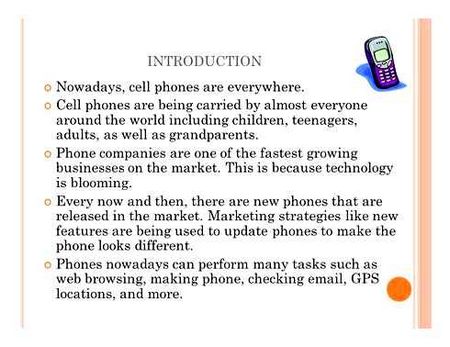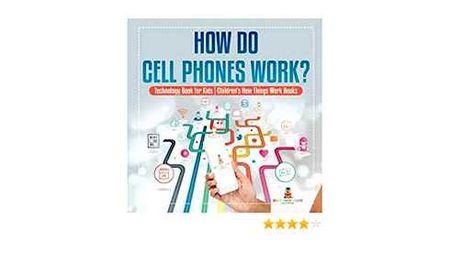How does the phone work for children
How a cell phone works?
Cell phones, or cell phones, have gained enormous popularity in a relatively short time. Cell phones became available to consumers in the early 1980s, but the technology to make them small and truly portable evolved gradually over a decade or so. By the beginning of the XXI century millions of people in all countries of the world were already using cell phones around the clock. And the benefits of complete mobility are not just enjoyed by adults: In the United States, for example, more than 20 percent of school-age children have cell phones, t. е. every fifth.
Before the advent of cell phones, people. such as police officers, cab drivers. could only call someone from their car using two-way radios. All such radio installations in one city transmitted signals through one large central antenna mounted on a tall building.
And because there was only one antenna for everyone, it could handle a very limited number of calls at a time. The cellular system solves this problem in the following way: each city is divided into many small cell sites. in a large city, there could be hundreds of cell sites.
Each cell site has its own tower (which, in addition to the antenna, also has transmitters and receivers that transmit and receive signals). Each tower can handle many calls at once, and the small size and weaker signal (compared to radio antennas) means that their signals will not interfere with other towers nearby.
If you call someone on a cell phone, your phone sends and receives signals using radio waves, an invisible energy that acts like light radiation. In other words, your cell phone is a sophisticated high-tech radio.
After you have dialed your buddy’s number, your phone must search for the nearest tower based on the strongest signal. When the strongest signal is found, your cell phone transmits certain information. such as your phone number and the factory number of the device.
This information helps your service provider (the company that cell phone owners pay your monthly cell phone bill to) make sure you are their customer. The cellular switching service then finds a free channel on which your conversation can take place, and provides a connection on that channel (all this takes only a few seconds).
And you can chat with a buddy with all the comforts of home. without wires tying you to a specific location. If you are driving from one end of town to the other in the car, your call will automatically switch from one cell site to the other, but the conversation will not be interrupted.
When to Buy a Phone for Your Child?
There is no single answer to this question. a smartphone will interest every child, no matter how old they are or how they are raised. The decision to buy a phone for your child should be based on a specific need, not on fashion or a child’s whim. Parents just need to make sure that the phone in the hands of their daughter or son is not just a toy or gadget, but a device with a purpose. It will provide constant contact, a sense of comfort, and strengthen relationships with peers.
That’s why a smartphone would certainly be helpful when your child has a busy schedule, starts coming home from school, or goes to camp for recreation on their own. Anyway, they say that the best time to buy your child’s first phone is 10-11 years and older.
Harm from cell phones
Scientists have found that mobile communication is source of harmful electromagnetic radiation for human health. Electromagnetic waves have now been proven to stimulate changes at the cellular level, cause gene disruption, and contribute to diseased cells and disease-causing tumors.
A cell phone causes heat in the head and around the ear
The electromagnetic radiation of the radiofrequency range generated by the handset is absorbed by head tissues, in particular brain tissue, retina, visual, vestibular and auditory analyzer structures, and the radiation acts both directly on individual organs and structures and indirectly, through the conductor, on the nervous system.
Scientists have proved that electromagnetic waves penetrate tissues and cause them to heat up. Over time, this adversely affects the functioning of the entire body, particularly the nervous, cardiovascular, and endocrine systems. This proves that the harm of cell phones is enormous.
How a phone works?
All sounds are created by the vibrations of some body. When a body vibrates, it causes the molecules around it to vibrate, which causes ripples called sound waves.
Sound waves can travel through air, water, and solid materials.
An ordinary telephone handset has oscillating parts. a disk at the bottom and another disk at the top. that convert the sound of the voice into electrical signals. These signals travel through the telephone wires and are converted back into sound.
Telephones are usually wired because they need electricity to work.
When you pick up the phone, an electric current makes it possible to dial a number-a series of numbers that connects you to a friend’s or girlfriend’s phone.
Each digit dialed has its own electrical signal, and a properly dialed combination of these signals finds the telephone line for your friend’s trimmer.

When you dial a number, the local telephone exchange receives this information and sends your call in the right direction.
Telephone signals to places nearby travel through wires or cables that are buried underground or suspended in the air on poles.
However, if the person you’re calling is very far away, the electrical signals your phone sends out turn into invisible waves of energy called microwaves.
Microwaves travel great distances, reaching communication satellites that orbit the globe in space, and the satellites send them back to Earth, increasing the distance these waves are able to travel.
The antenna at the receiving station near your friend’s house picks up these waves and turns them back into electrical signals.

They go on the cable to the telephone exchange that serves the area where your friend lives, and the exchange recognizes his or her telephone number.
The signal is then transmitted to your friend’s phone, and his phone rings. The whole process from dialing to calling takes only a few seconds!
Today’s children take the phone for granted.
Do all homes have conveniences?
Lichens
How ships sail?
The Activity-Based Approach to the Psyche
The ability to adapt. is the key to survival
Types of telephone network
The first time telephone communication was introduced in 1876. A few years after that, the first telephone exchanges appeared in some major cities. Further development of communication was based on the gradual improvement of hardware and technical data transmission channels.
The telephone network distinguishes between several types:
- external trimmer line. trimmer line, between different PBXs;
- The internal telephone network is the network used directly by the organization for its own needs.
As for the quality and technical characteristics of telephone service used in modern times, there are fundamental factors to consider:
Today in the world there are a large number of companies that are engaged in providing telephone services. Predominantly, this direction is relevant to the markets of developing countries.
Telephone company. a company that supplies telephone service.
Phone application. a program to manage the phone network.

CHN is the highest load hour.
Disconnect call. disconnection on the initiative of one of the subscribers.
The ringing tone is the signal produced by the ringing signal to attract the caller’s attention, indicating an incoming call. In analog lines. the ringing signal is an alternating current of low frequency and high voltage produced by the PBX.
Experts believe that wired telephone service will remain precisely because of its reliability, as an alternative to mobile. But it will, of course, be upgraded. This process has been going on for a long time. The main changes concern the networks. Thick bundles of worn-out copper wires will be universally replaced by optical communication lines, reaching as far as the apartment.
How the parental control works and what it is for
Today the situation has become much more complicated, the capabilities of smartphones surpass any technical means of those years, and the Internet has made children virtually uncontrollable. But not really, there is a so-called “parental control” which at least partially returns to adults the knowledge of what their child watches and listens to. And where it is actually.
Many of these features are pre-installed in iOS and Android operating systems, and the missing ones are implemented in fairly powerful applications. They are based on databases of cyber criminals and sites distributing inappropriate content.
Coffee prevents cardiovascular disease
According to a study conducted by South Korea’s Kangbuk Samsung Hospital, regular coffee drinking. three to five cups a day. Can prevent vascular thrombosis. than 25,000 employees have been under medical supervision for a long time. “Moderate coffee drinkers” (as opposed to those who drank much more or less coffee) had virtually no signs of cardiovascular disease.